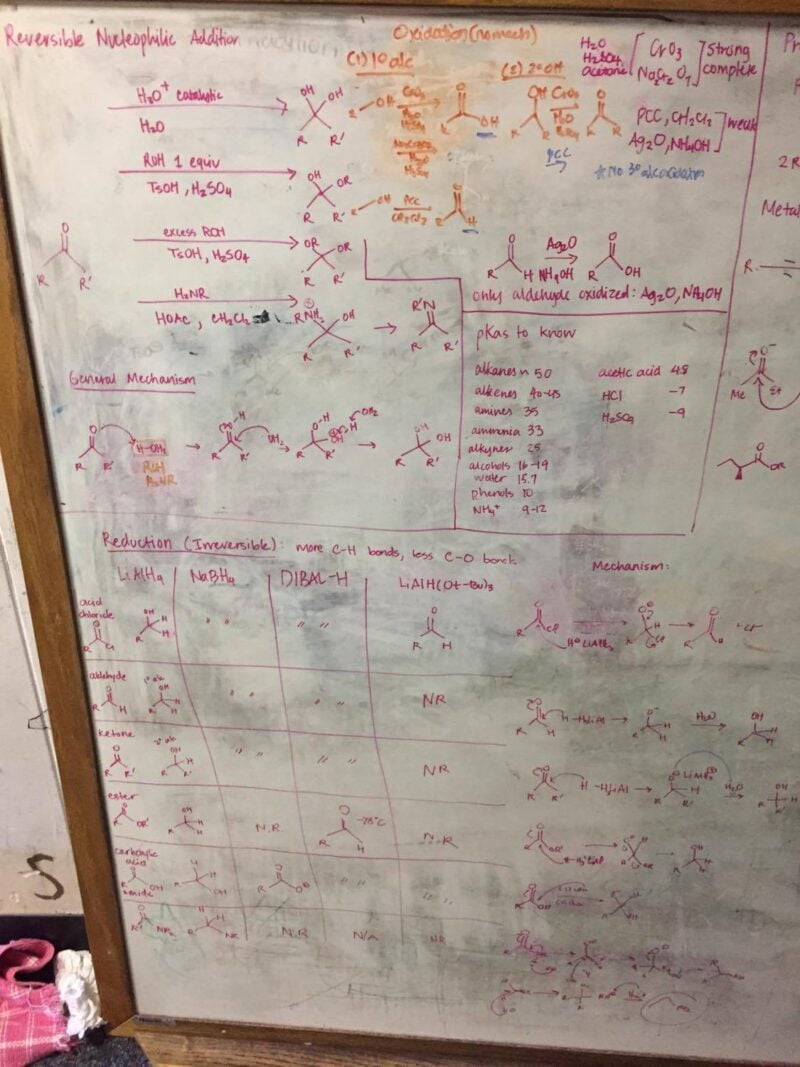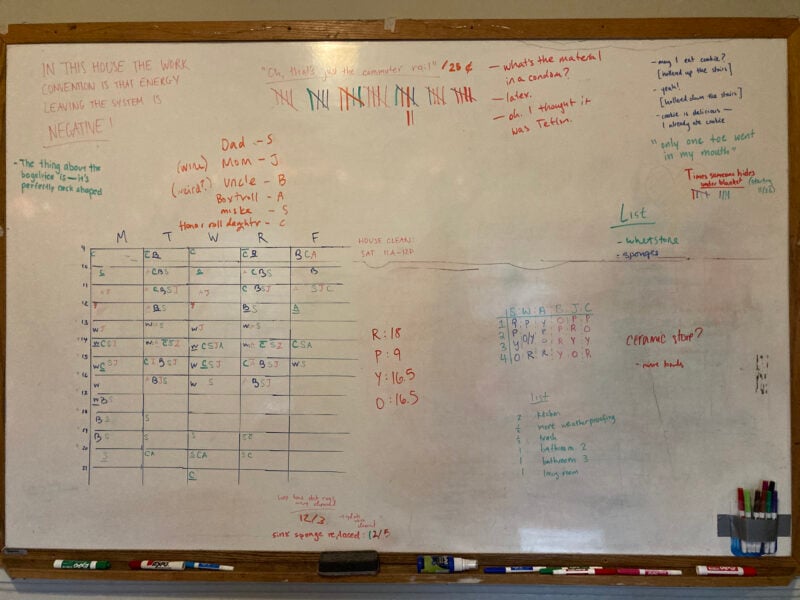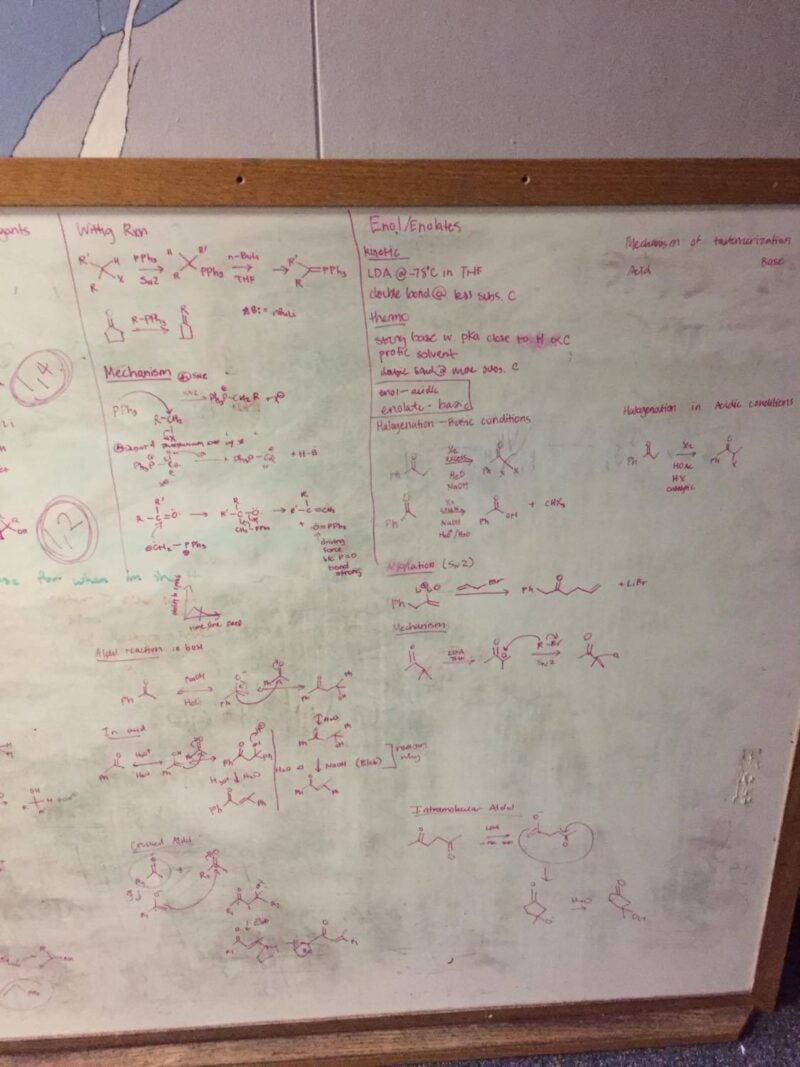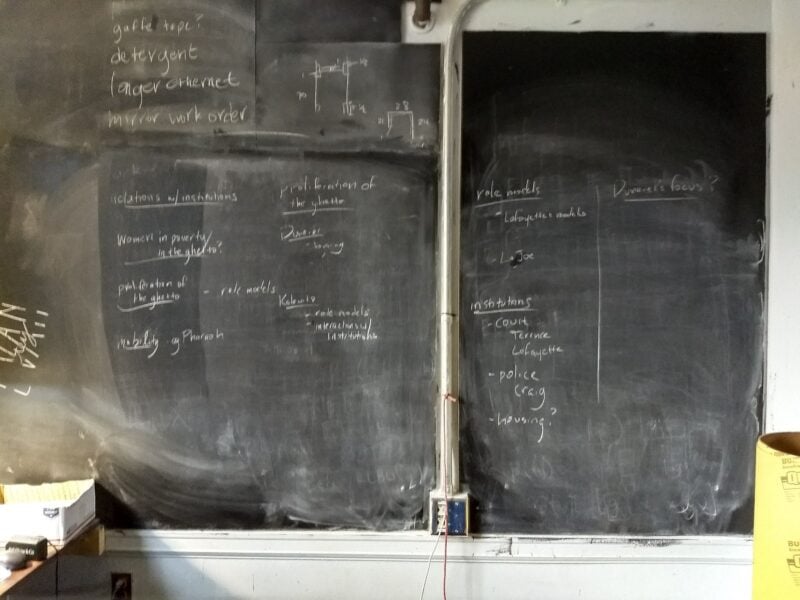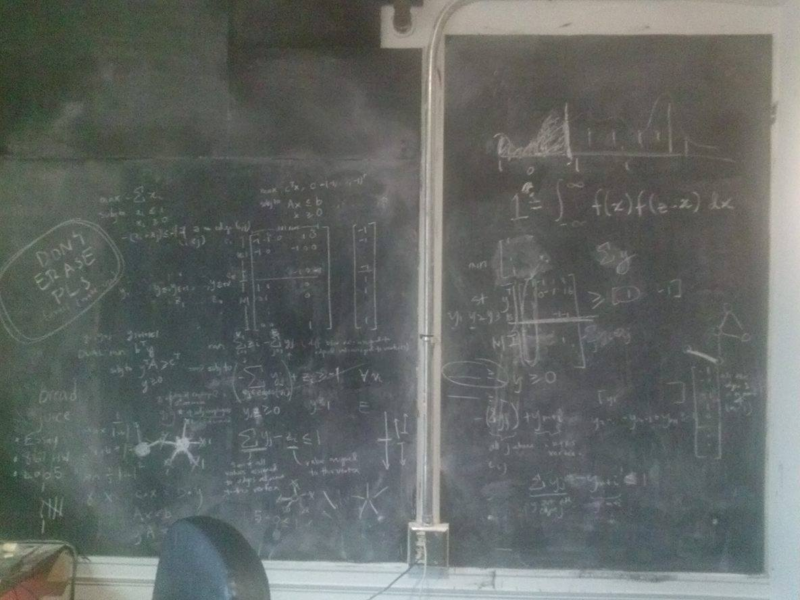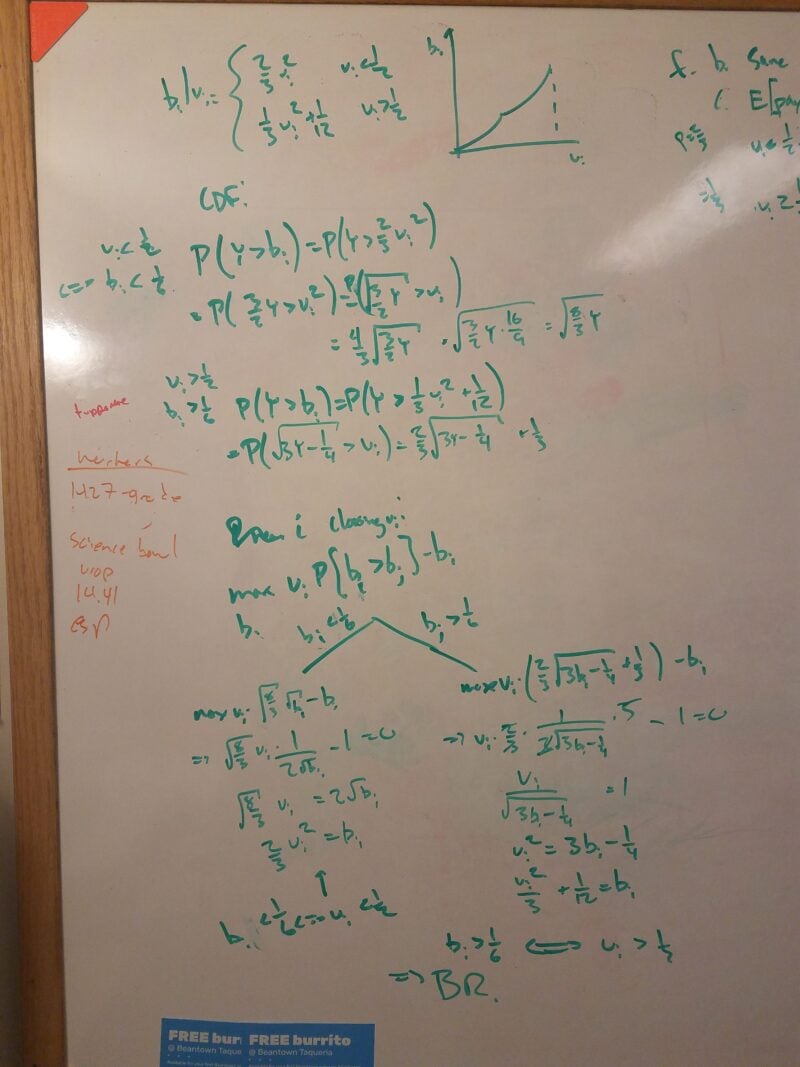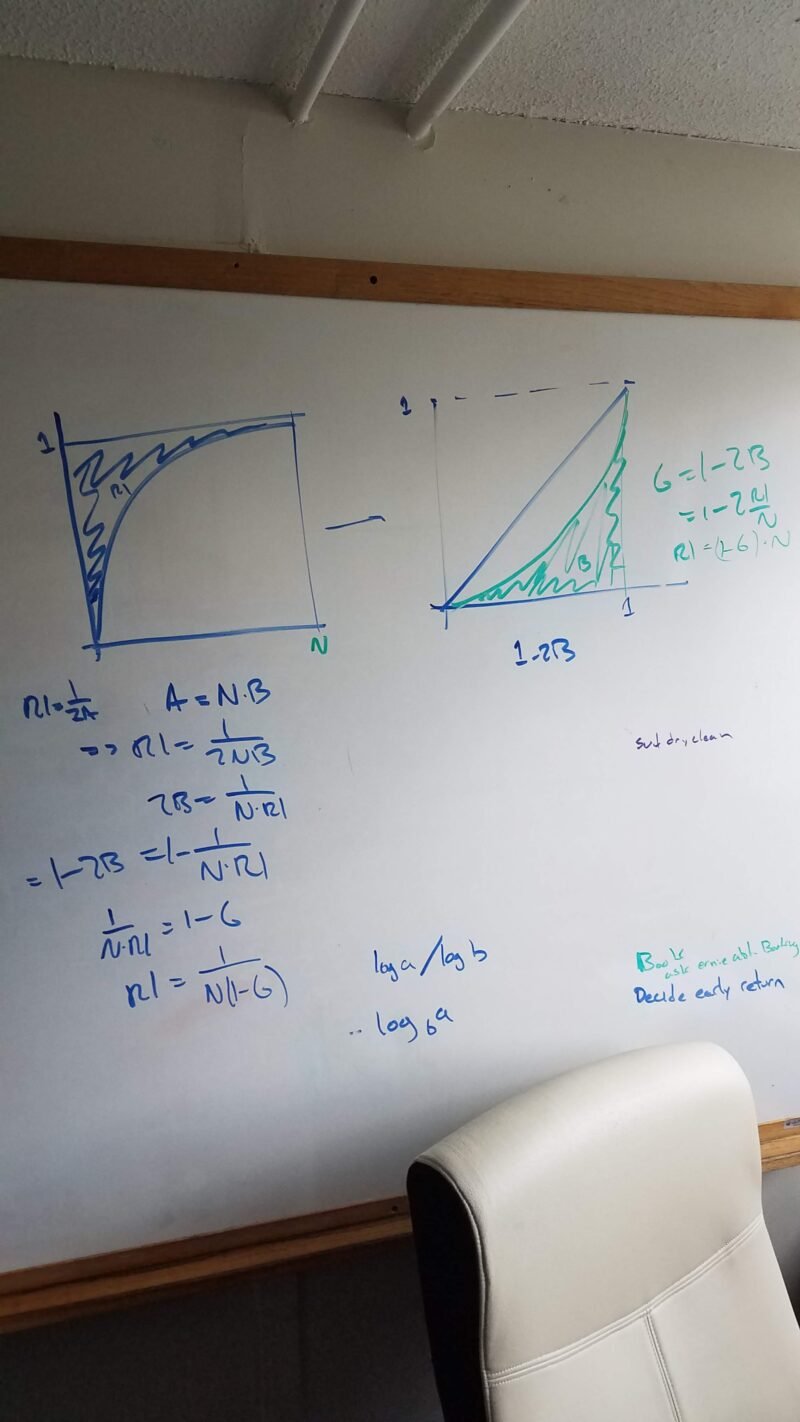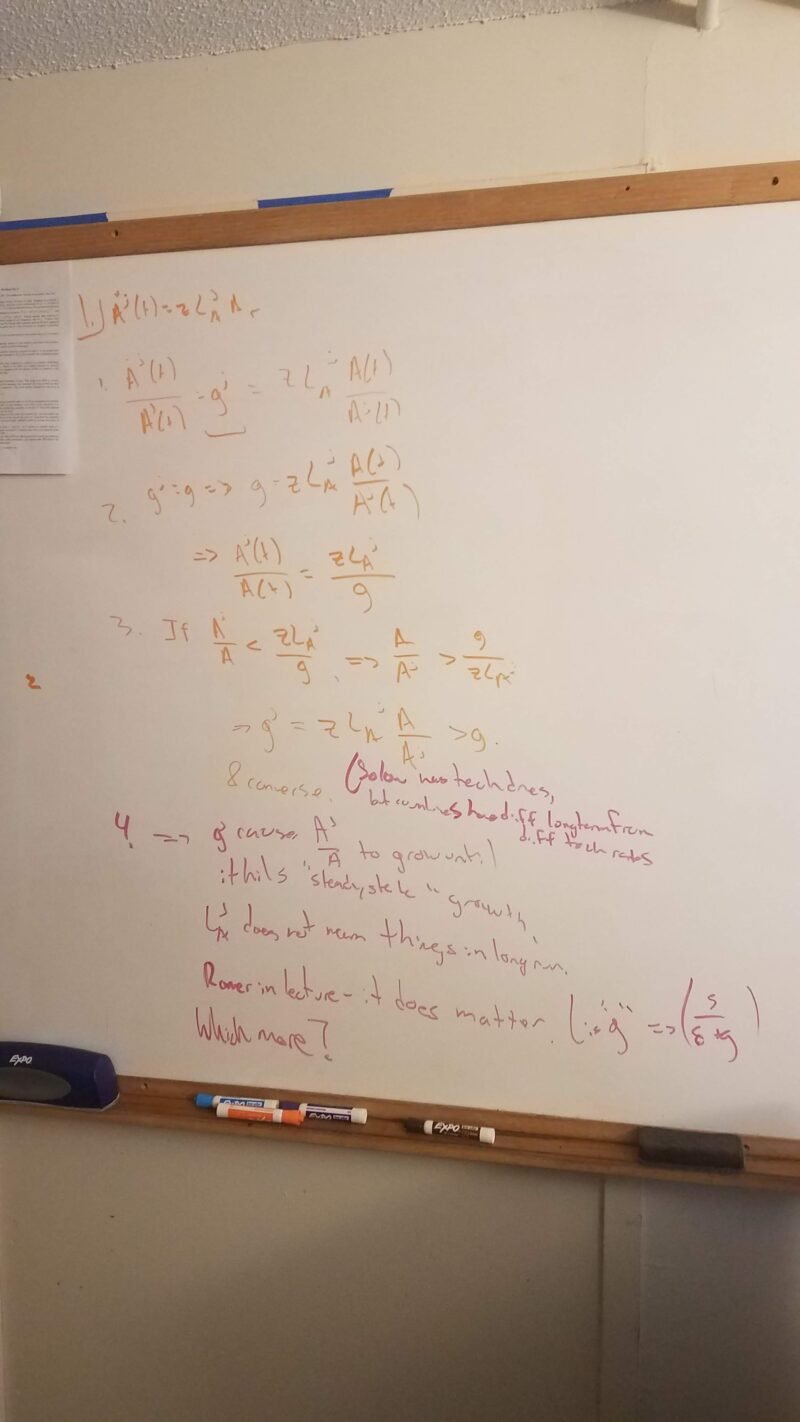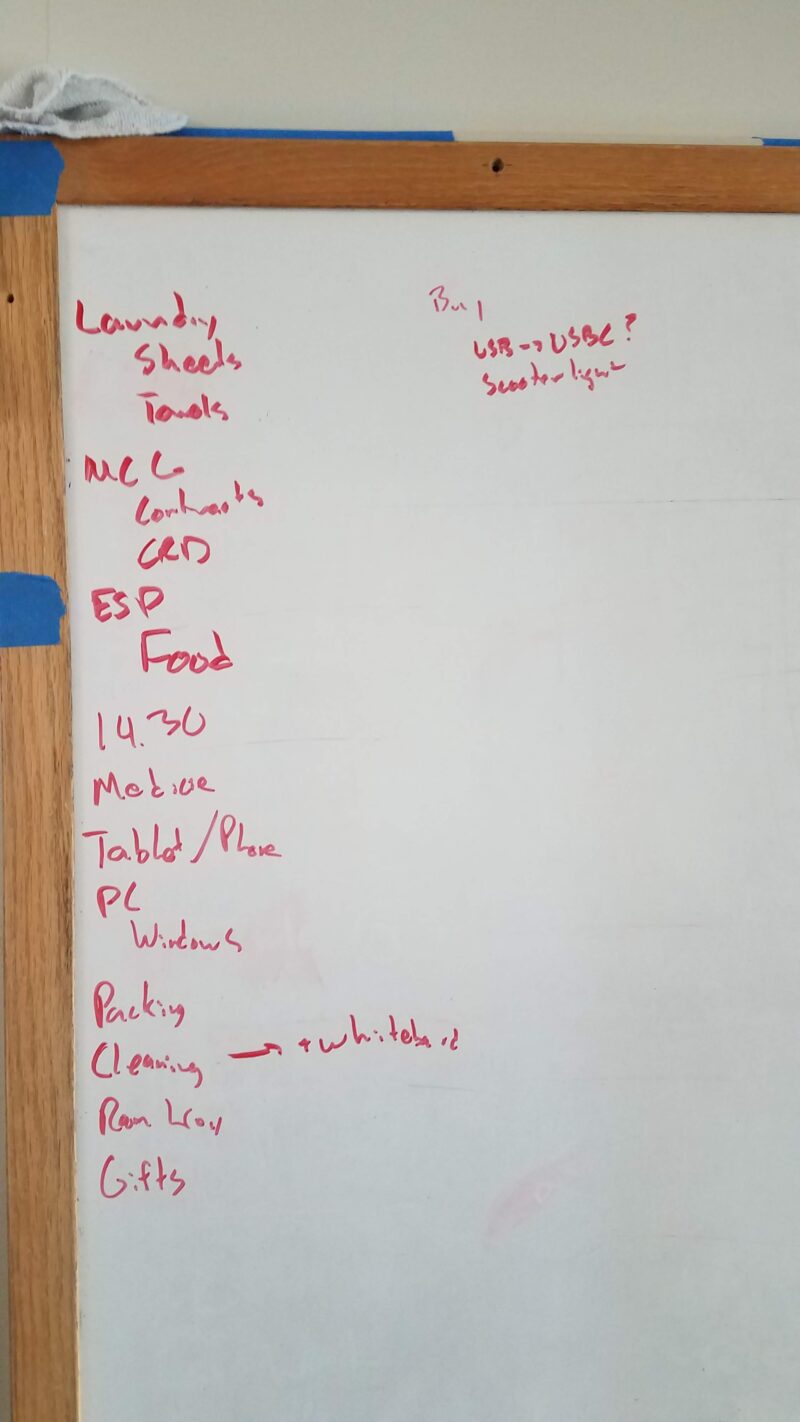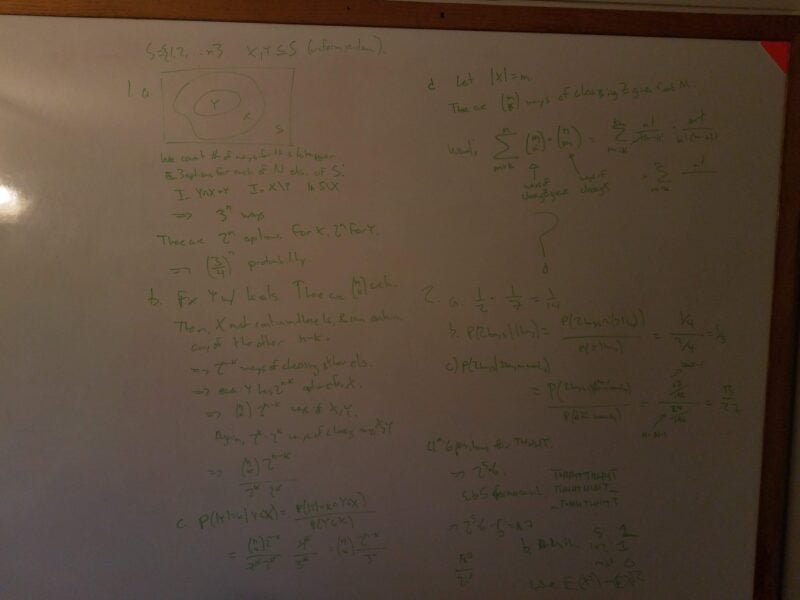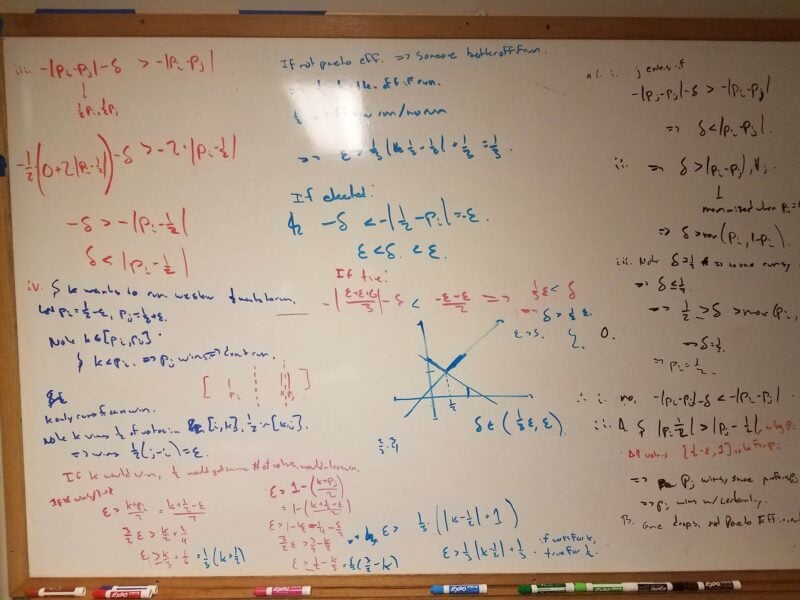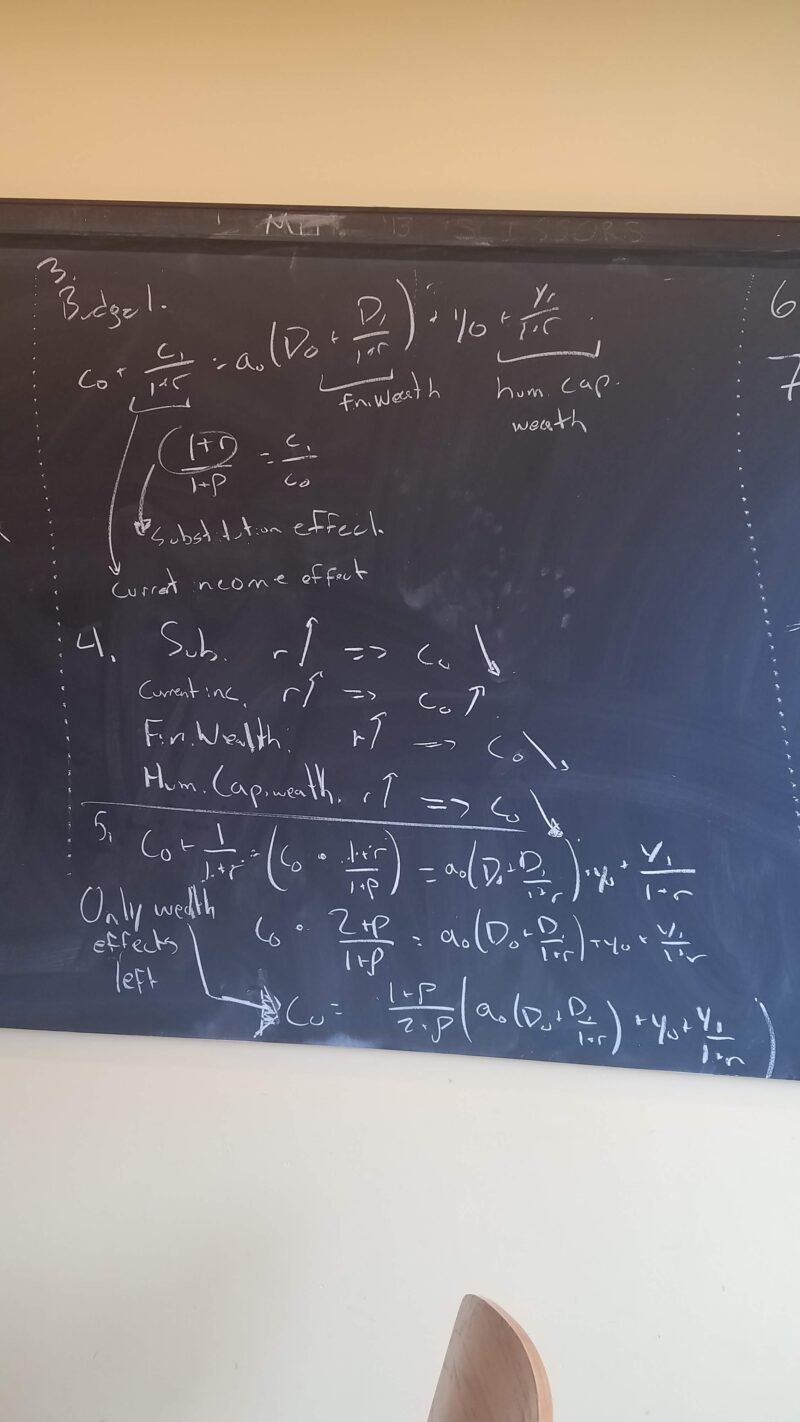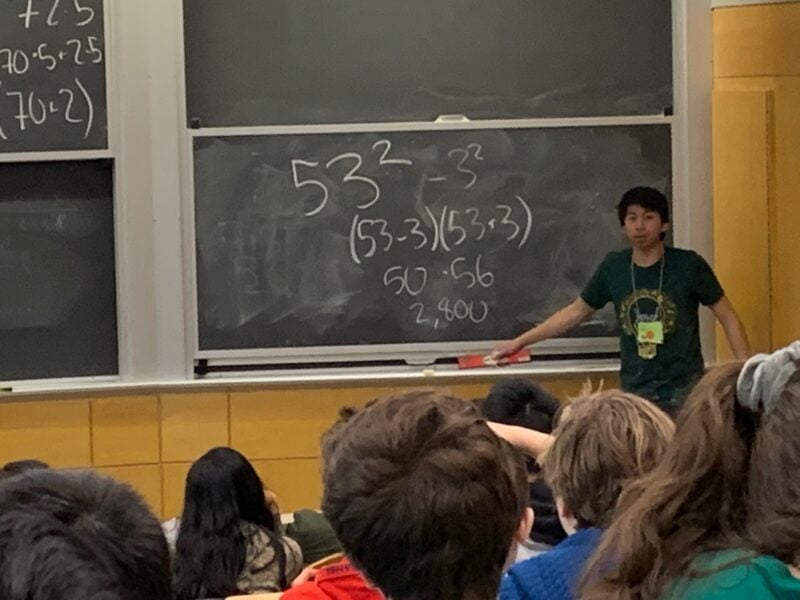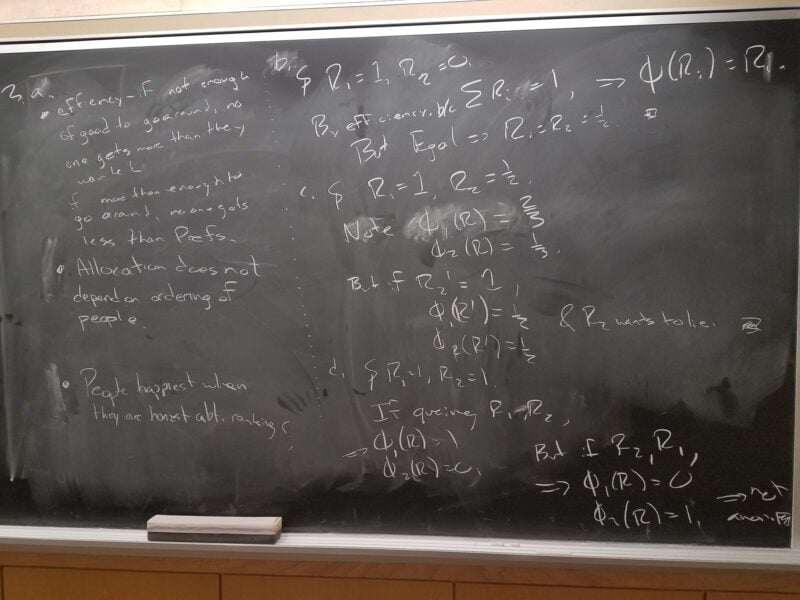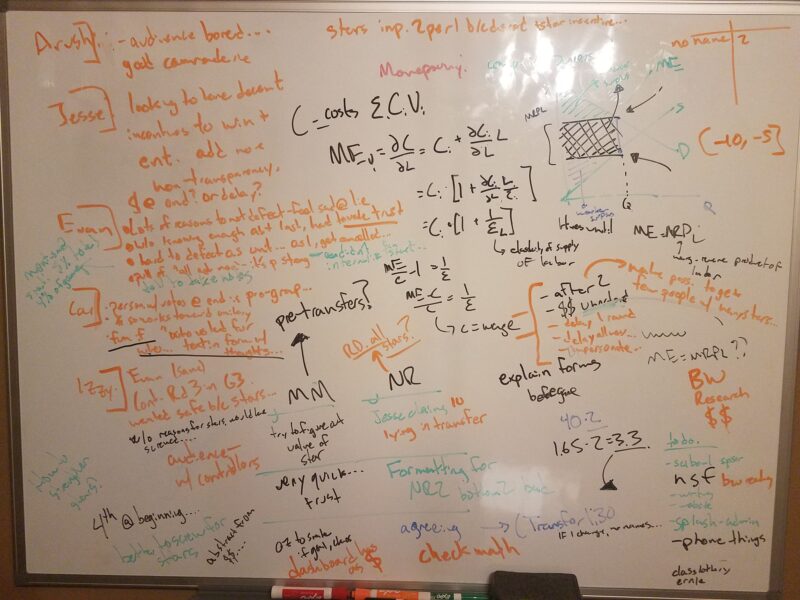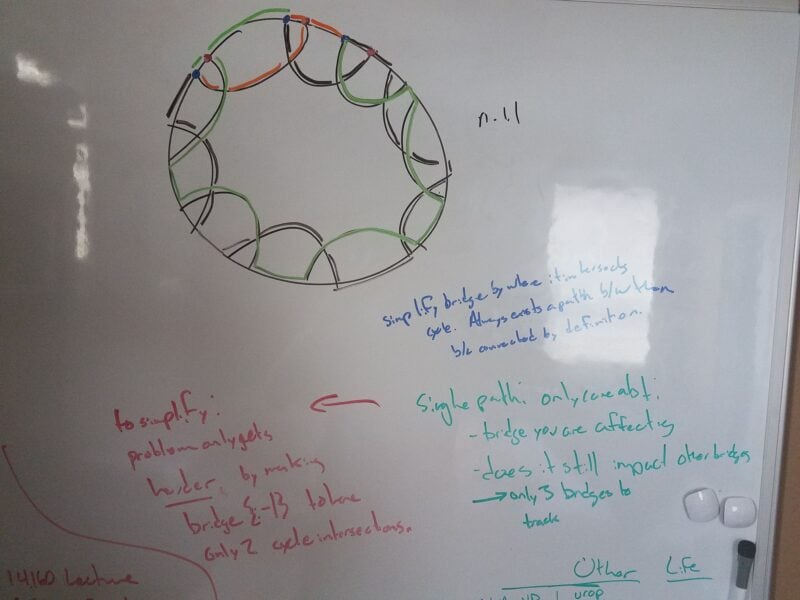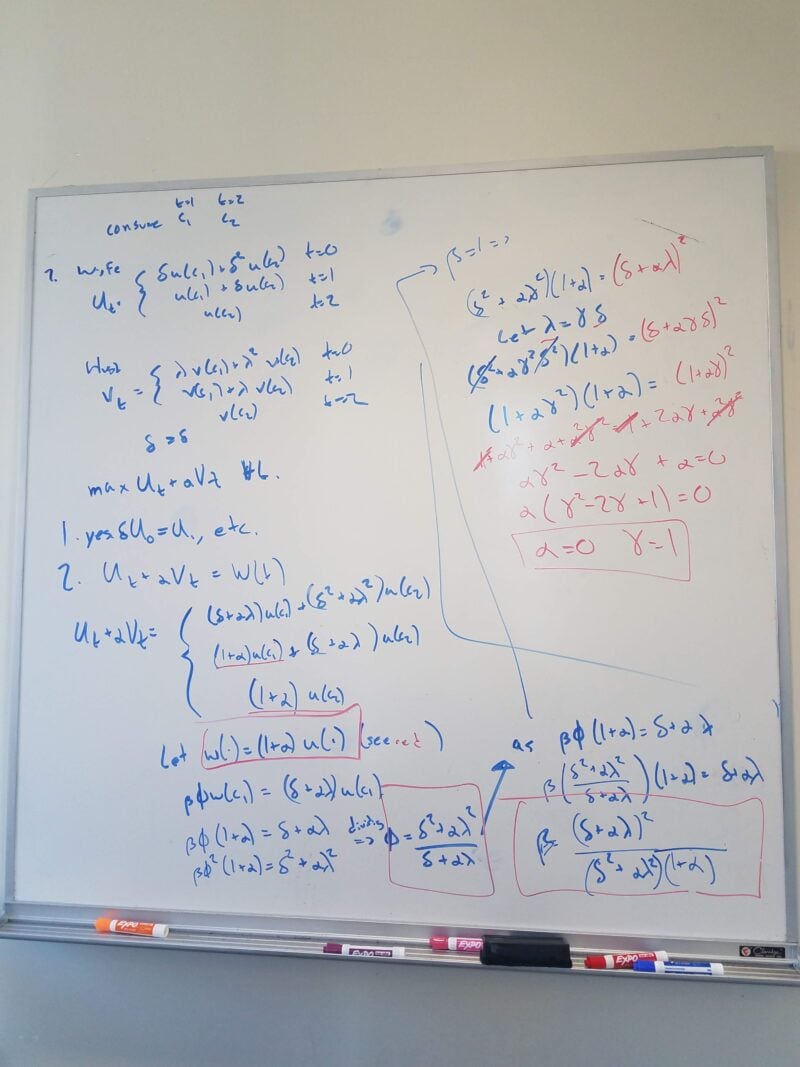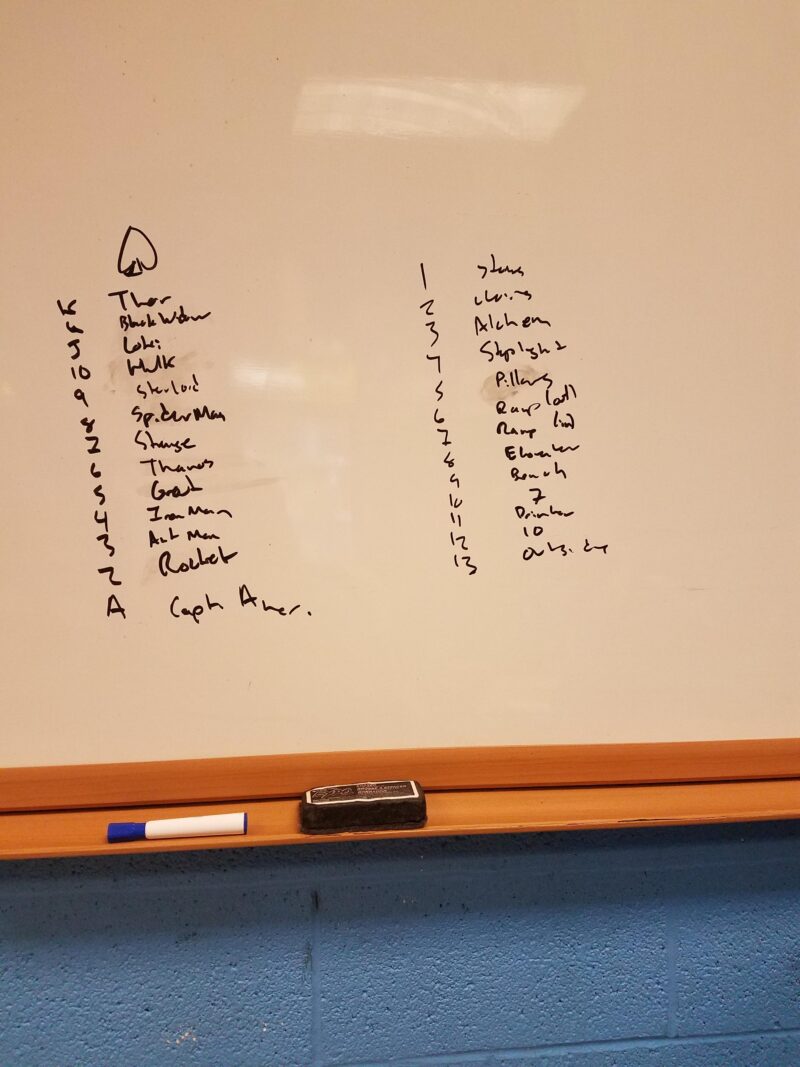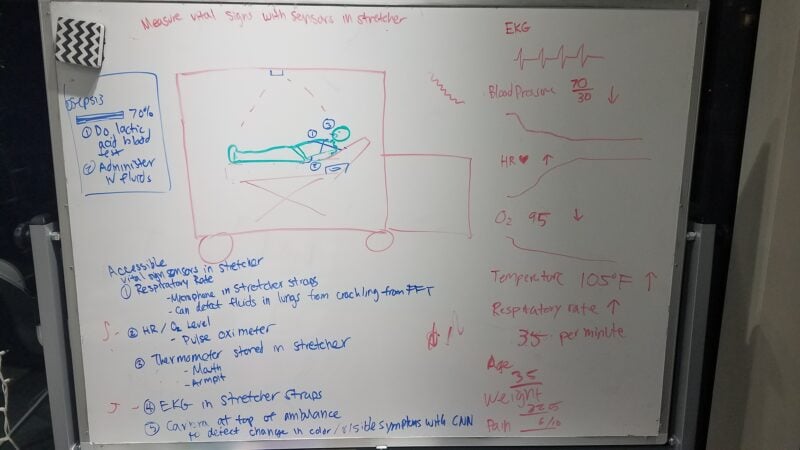
how to restore an old whiteboard, mit style by Paolo A. '21 G
four years of whiteboard wear and care
This blog post is an ode to whiteboards, which I love very, very dearly. My own history with whiteboards, how I use them in my life, and perhaps most importantly, how to fix old and dirty whiteboards.
This is a guide for how to restore an old, dingy whiteboard that:
-
has marks or stains from heavy usage for a long time that are stuck on the board, or
-
no longer erases well at all — when you write on it and try to erase, it leaves smears or shadows of what you wrote, or
- is hopeless beyond repair. This technique was used to fix a whiteboard that had been sitting in a hallway, filled with writing that hadn’t been erased for at least two years — now, it works just fine, and is, in fact, the whiteboard that’s in Shuli’s house.
To see just how effective this technique is, take a look at these before/after photos:
This guide is not
-
a permanent fix; it will need to be repeated as often as needed (personally, I do it about once a semester, but the whiteboard is definitely dirty by the end)
-
intended to be used on new whiteboards that still erase well; this will ruin the existing coating that is on the whiteboard. Only do this on old whiteboards!
No how-to guide is complete without an aesthetic photo or video showcasing it, so here’s a timelapse that I recorded last week of me cleaning the 6’×4’ whiteboard that is in my room!
Materials required:
-
whiteboard (duh)
-
paper towels
-
washcloths that you don’t mind getting stained
-
white toothpaste (i prefer ), as unscented as you can get unless you really want your room smelling like mint. I used about 8oz for a 6’×4’ whiteboard.
-
isopropyl alcohol (>90%, ideally)
-
a can of WD-40 that has a (not just the tube)
-
(Timestamp 0:00–0:01) Erase the whiteboard as much as you can using just an eraser. Basically, you’re trying to get out as many surface stains as you can. Smudges and really old marker may be left on the board — that’s ok! we’ll remove them in the next step.
-
(Timestamp 0:01–0:09) Next, we’ll get out all of the long-term stains that are on the whiteboard. Squeeze out two fingertips of toothpaste onto your fingers, and smear it into an 8”×8”(ish) area of the board by making “lines” of toothpaste that are separated by an inch. The amount of area you cover will vary, and should basically be much area as your toothpaste dollop can cover. (See below for a visual explanation)
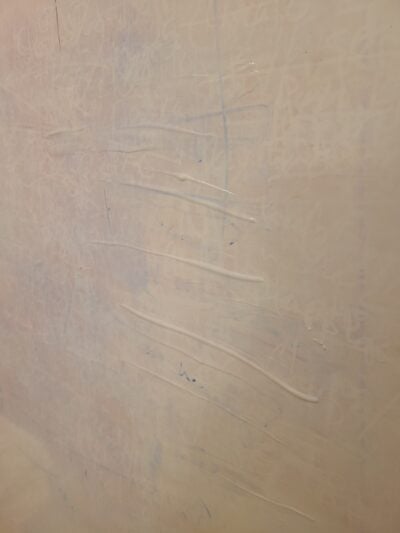
it’s a bit hard to see, but there’s lines of toothpaste that i’ve smeared on the board there
Using a washcloth, rub the toothpaste in circles on the whiteboard until the toothpaste has been all removed from the area. The toothpaste will “bond” to the stains and come out onto your cloth. Repeat if there are still visual stains that you can see in the area.
Continue with the rest of the whiteboard until you’re left with a clean board! (As best you can, always do the circle-motion with a clean part of your washcloth, switching out washcloths as necessary.)
This step will make your room smell very minty, or whatever scent your toothpaste is. You may want to open a window and set up a fan in advance.
-
(Timestamp 0:10–0:12) After the previous step, there may still be a few lingering “smudge” stains that are on the whiteboard; in addition, there may be a tiny bit of residual toothpaste on the board. To fix both of these problems, put some isopropyl alcohol on a paper towel, and wipe down the entire board. Switch paper towels as it starts getting dry or as it fills up with stains. Repeat as necessary until the entire whiteboard feels smooth to the touch. Any bumpiness you feel is toothpaste left on the board from the previous step that you need to wipe off with alcohol.
-
(Timestamp 0:12–0:13) If you still see areas with any surface stains, repeat steps 2 and 3 on that area alone. You want to make your whiteboard as spotless as possible before the next step.
In addition, make sure that your whiteboard is completely dry by using paper towels or washcloths before proceeding.
-
(Timestamp 0:13–0:17) Now, we need to “resurface” the whiteboard so that there are fewer stains in the future.
Spray your whiteboard generously with WD-40 using the spray nozzle (not the tube.) I cover the edges of my whiteboard with painter’s tape to avoid spraying the wood finish.
Use a paper towel to spread the coating evenly across the entire whiteboard. The paper towel will quickly become saturated with WD-40, but keep using the same paper towel to spread the coating; this way, you pick up as little WD-40 with your paper towel as possible. Your goal is to make an even coat of WD-40 across the whole board.
WD-40 “plugs” the microscopic holes in your whiteboard that caused stains — marker ink could get into the holes but then couldn’t be erased. Turns out that WD-40 really does fix everything. This will likely cause your room to smell, so I encourage you to open some windows before you do this step.
-
(Timestamp 0:17–0:24) Let sit for at least 2 hours — longer is recommended, but no more is needed than a full day. Then, dry the WD-40 off of your board using paper towels!
Keep drying until there is no excess WD-40 on the board. If you draw a line with your finger on the board and you see a smudge, that is WD-40, and you need to keep drying. (This will take more time and paper towels than you think!)
And voila! A whiteboard that is clean and collects marker smudge much more slowly. I’ve noticed that on my own whiteboard, this process causes some colors of whiteboard markers (namely, red and dark blue) to smudge more than other colors. YMMV, depending on how old your whiteboard is. (This whiteboard has seen heavy use for a long time, and so is definitely on the much more worn side.) I highly encourage testing out your markers on a small corner of your whiteboard once you’ve finished by making small lines of each color and then erasing them, just to see if any colors work less well than others.
Some bonus tips:
-
Toothpaste + washcloths will also get out marker stains that exist on wood (which can happen if you have a wooden marker holder, like my whiteboard).
-
Don’t use any form of tape02 in the (slightly modified) words of edna mode, “NO TAPE” on the whiteboard — it ruins the finish D:
-
While you wait for the WD-40 to set, you should spend some time cleaning your erasers. Part of the reason that whiteboards tend to stain is that erasers themselves are dirty. I mean really, when was the last time you cleaned a whiteboard eraser? There’s many guides on the internet for how to do this that you can look up. Or, just buy a new eraser.
- Don’t throw your dirty washcloths filled with toothpaste directly into the wash with all of the rest of your clothes. Instead, rinse them out by hand first to get toothpaste and marker ink out.
-
Erase your newly-cleaned board frequently. The longer that marker stays on the board, the more likely it is to get stuck.
As you maybe can tell by now, I love whiteboards. Like, I-have-spent-thousands-of-hours-working-at-and-cleaning-whiteboards. Now comes the actual blog post part :P
why whiteboards are best
I was not always a whiteboard person. My high school did have whiteboards in all of its classrooms, but I didn’t use them that often. The primary exception was my calculus and physics classes, which both had “flipped” classroom setups and dedicated homework-time in class, where my classmates and I would spend time at the board figuring out problems.
It was also in high school that I began teaching. I spent many, many hours at the front of a classroom with a whiteboard beside me, trying to explain the why of solving math problems, the reasoning and thought processes behind combinatorics and number theory. In retrospect, this probably did much to influence how much I rely on having a large workspace to figure out my thoughts.
At MIT, I found a world filled with vast expanses of chalkboards: basically every classroom has multiple blackboards that would become very, very filled over the course of each class. And while I did learn how to make dotted lines with chalk03 i can teach anyone to make dotted lines in 20 seconds, but this is only something that can be easily taught in person. and with access to a chalkboard. so unfortunately i cannot teach in this blog post. maybe in a future post... (and make dotted circles both clockwise and counter-clockwise), I also still really, really liked whiteboards. I bought a 2.5’×3.5’ whiteboard for my freshman year triple so that I could have a place to scrawl down thoughts as I was working solo. This was in addition to the two 6’×4’ whiteboards that existed in a lounge just 20 feet away from my room.
The summer after my freshman year, I subletted a room owned by my friend Evan T. ‘19, who installed chalkboards all over one of his rooms in East Campus, and I realized the true potential of having a permanent large surface to write on in a room. While my small whiteboard was useful for drawing pictures or doing parts of a problem, the vast expanse of a single surface to write on was simply so powerful.
MIT has a culture, where people love giving away objects they don’t need anymore to people who love collecting new things. I’m definitely not the most active reuser on campus, but I’ve still acquired a lot of different things off of various “reuse” lists and forums, including:
-
3’ mousepad
-
So, so many power banks
-
Desk lamp
-
Desk fan
-
Laser pointer/clicker
-
Poker chip set (in one of those fancy briefcases)
-
Projector
-
Kick scooter
-
E300 electric scooter
-
All of the cables in the world
-
Voltmeter
-
Many, many, many, books
-
Keyboards and mice
-
A full speaker set
-
And of course, the whiteboard featured in this post c:
While I was living in Evan’s room, I managed to find this whiteboard, which I suspect came from a classroom that thought it was too old and smudged that it wasn’t worth keeping around anymore. I walked the whiteboard back to Evan’s room using the aforementioned kick scooter, hauled it up a flight of stairs, and started trying to figure out how to restore it.
I spent many, many days scrolling through forums where teachers talked about how they fixed their broken whiteboards. I tried all sorts of tricks for how to fix my whiteboard, some of which worked well, and others which did nothing. The procedure that I described above is what I found to work best for my whiteboard, and have been using it ever since.
This whiteboard has been a lifesaver over the past 3 years. I’ve used it for everything — making to-do lists to keep track of what I need to be doing, solving out pset problems, drawing diagrams to turn in, and more. Nowadays, I find it difficult to solve difficult problems without using a whiteboard to spread out my work and to keep track of all of my thoughts. Here’s a sampling of things that have been drawn on the whiteboard installed in my room.
However, I’m not the kind of person who can just sit in my room and only do work there.04 rip my productivity during covid times where i’m basically forced to do that MIT is filled with chalkboards in basically every classroom, and if there’s not a class happening, you’re free to just walk in and work in that classroom. Or, lounges for different departments or common areas in every dorm have their own dedicated workspaces, and I have spent many, many hours puzzling over psets while laying down on couches. Here’s a selection of whiteboards and blackboards from places that aren’t my room c:
After I leave college, I don’t know what I will do without a large whiteboard to work on. Will I bring it with me? Will I buy a new one?05 i really don’t want to buy a new whiteboard, a whiteboard this big is like $160 and aaaa Who knows. But whiteboards are love, whiteboards are life :P
- “my grandma first made me this recipe in the summer of 1963, the hottest summer we ever had…” back to text ↑
- in the (slightly modified) words of edna mode, “NO TAPE” back to text ↑
- i can teach anyone to make dotted lines in 20 seconds, but this is only something that can be easily taught in person. and with access to a chalkboard. so unfortunately i cannot teach in this blog post. maybe in a future post... back to text ↑
- rip my productivity during covid times where i’m basically forced to do that back to text ↑
- i really don’t want to buy a new whiteboard, a whiteboard this big is like $160 and aaaa back to text ↑
